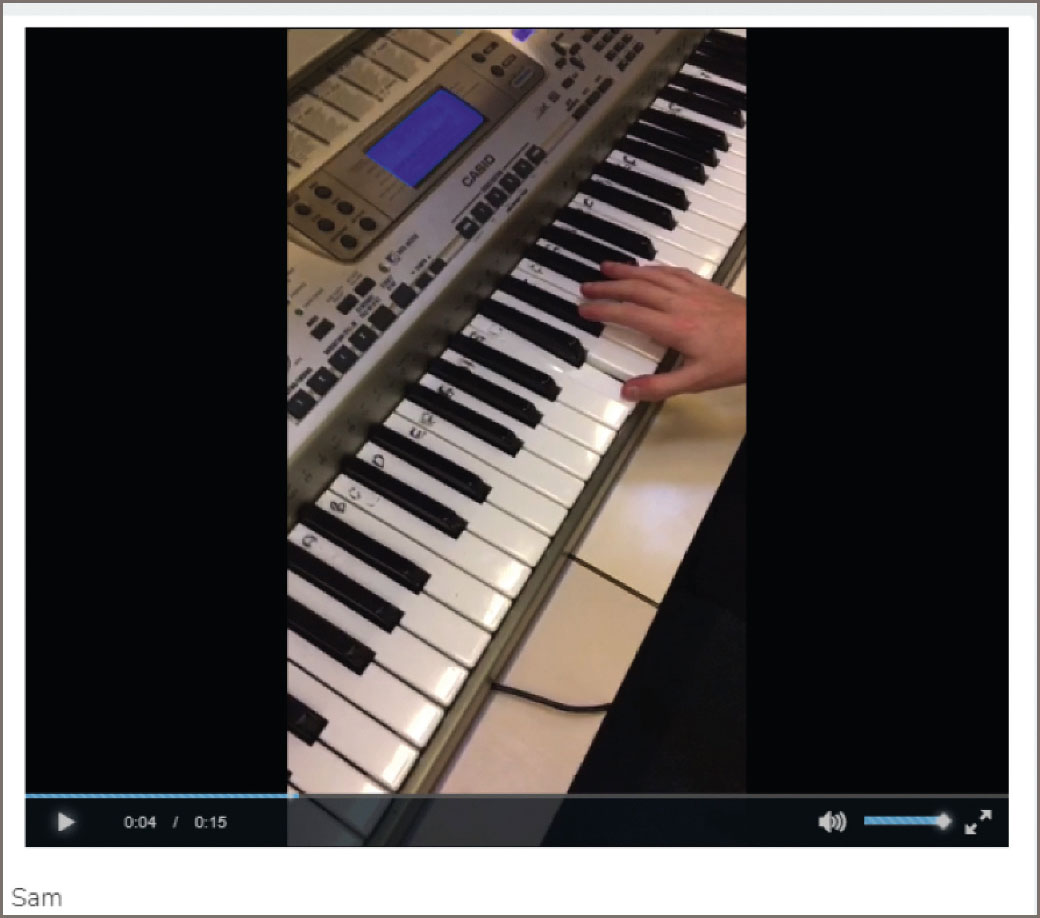
There are a number of pieces of technology that are changing the parameters of what can be achieved in the music classroom. The best of these technologies manage to balance a number of different conflicting elements simultaneously, such as improving students’ results while relieving teacher workload or implementing high-end devices while also being cost-effective. One of those technologies which has been revolutionary in my teaching (together with some of my friends from other subject areas) is Seesaw, an app which has helped me to manage and improve student group performances at Key Stage 3, as well as individual outcomes at GCSE.
Seesaw is an app that can be used to record images, audio and video that are then uploaded to the cloud. It is designed specifically for classroom use and handles the practicalities involved in an efficient and thought-out manner. In this article I will outline the challenges that I was facing in my teaching and then explain how Seesaw has helped to overcome them.
RECORDING WITH EASE

A Seesaw recording
My Year 9 curriculum is very practical, uses a lot of practice rooms and takes a lot of inspiration from Musical Futures. Using this system should ideally give students quieter and more focused work spaces, as well as greater ownership over their finished performances. Until recently I would visit each practice room and use a handheld device to record their performances, which I would upload onto the school network to access and assess later. This was always a time-consuming process, with audio files taking up a lot of network space and often ending up being accessible to all students to listen to, or none of them.
Seesaw relieves many of these problems and has made my teaching more effective. Pupils can download it to their own devices and log in via a QR code (which can be printed out and put up as posters in practice rooms or alternatively cut out and stuck into their books). They can then record their performances as many times as they like before uploading their best one to the cloud. They tag in the other members of their group, who can then watch and give feedback on the videos. I can access those videos and assess them from my computer, tablet or phone, whether at work or at home. It's also easy for me to create class groups, importing registers from the student data portal, Word or Excel. And it's free!
I have found that this system has not only relieved my workload in the classroom, freeing me up to give more focused feedback time with groups, but it has also helped pupils produce noticeably better performances. I have theorised that this is because they are keen to show themselves in a good light and, given the ownership of the recording stage of performances, they will work hard to make sure that what they produce is of high quality. Their time is more focused on not just getting their music ready, but also aiming to perform as well as they can. As musicians we know that this is an essential motivation when it comes to performance.
MATTER OF POLICY
There are some drawbacks to using Seesaw. You may be working in a school that simply does not permit students to use their devices in lessons as a matter of policy. Also, if pupils are uploading video files to the cloud without access to Wi-Fi they could end up using up lots of data. You also need to be able to trust your pupils to use their devices appropriately and avoid texting or using social media during class. It's up to you to decide whether you can outweigh these cons with the pros that Seesaw delivers.
With my GCSE pupils, Seesaw has been invaluable for those who develop their compositions using real instruments (as opposed to computer software). They upload draft recordings onto the cloud that can be easily recalled next lesson, and checked by me on a regular basis. I have also had great success in asking pupils to record mock solo and group performances at home and in their instrument lessons, and I am sure Ofsted would be delighted with the growing portfolio of annotated recordings that I have for each of my students.
I conclusion, I would recommend Seesaw to those who are in schools that have ‘Bring Your Own Device’ policies as it can greatly streamline the hectic nature of KS3 and GCSE music teaching. For the current generations, each year more tech-savvy than the last, Seesaw provides a workspace that everyone knows how to use effectively, using social network platforms in a way that gives pupils greater ownership over their performances and control over their success.

A teacher comment in Seesaw








